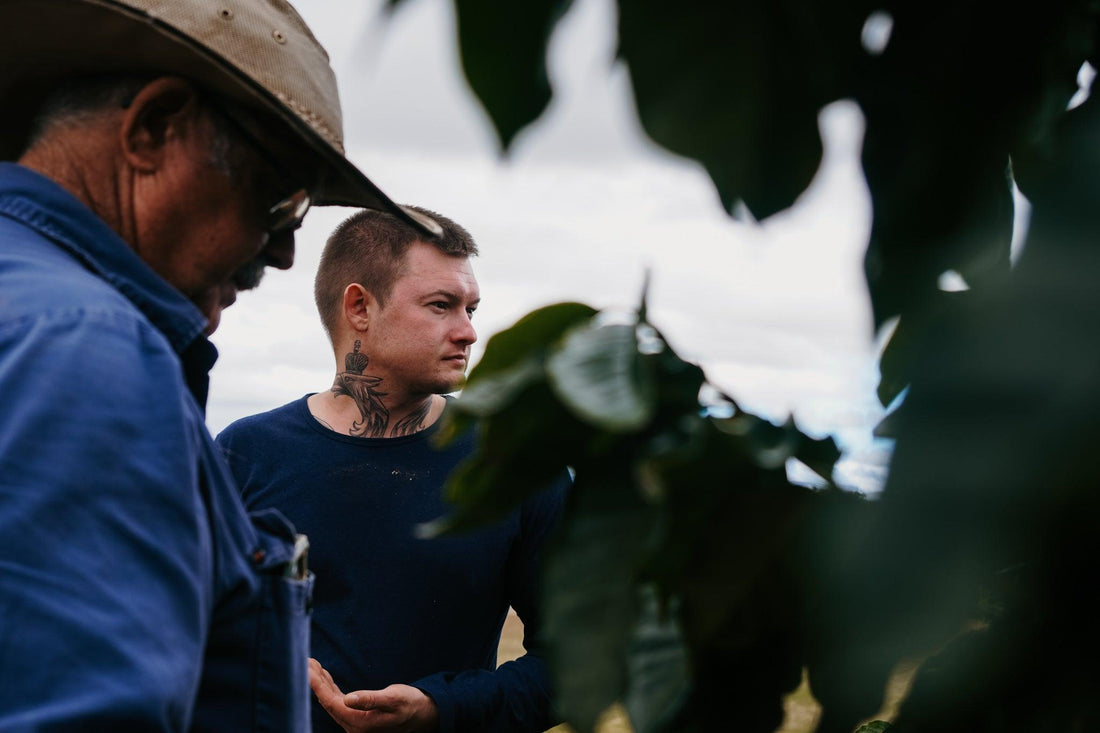
Rich History of Little-Known Australian Grown Coffee Industry
Share
Australian grown coffee may seem like a surprising concept to some, but it is a testament to the creativity and innovation of the Australian people. The history of Australian grown coffee is a fascinating tale of experimentation, perseverance, and a desire to create something truly unique.
The story of Australian grown coffee began in the late 19th century, when coffee was first introduced to the tropical regions of northern Australia. The climate and soil were well-suited to coffee cultivation, and the industry quickly grew, with many small-scale farmers starting to experiment with different varieties of coffee beans. However, despite these early successes, the industry was short-lived, and by the mid-20th century, Australian coffee was all but forgotten.
It wasn't until the 1980s that interest in Australian coffee was revived, thanks to the efforts of a few dedicated individuals who saw the potential for a high-quality, locally-grown product. These pioneers faced many challenges, from sourcing the right varieties of coffee plants to developing new harvesting and processing techniques that would work in the Australian climate.
Over the next few decades, Australian coffee growers worked tirelessly to perfect their craft. They experimented with different roasting profiles, blending techniques, and brewing methods, all in the pursuit of a truly exceptional cup of coffee. And slowly but surely, their hard work paid off.
Australian Coffee Processing & Harvesting Methods
Australian coffee farmers use a variety of processing and harvesting methods, depending on factors such as location, climate, and personal preference. Here are some of the most common methods used in the industry:
-
Hand-picking: This is the most traditional and labor-intensive method of harvesting coffee beans. Hand-picking involves carefully selecting only the ripest cherries from the coffee trees, ensuring that the flavor of the beans is at its best. This method is still used by some smaller-scale Australian coffee farmers who place a high value on quality over quantity.
-
Strip-picking: In this method, all the cherries are removed from the coffee trees in one go, regardless of whether they are ripe or unripe. This method is quicker and more efficient than hand-picking, but it can result in lower-quality coffee.
-
Mechanical harvesting: Some Australian coffee farmers use machines to harvest their coffee beans. These machines can be adjusted to only pick the ripest cherries, which can help to maintain the quality of the beans. However, some argue that mechanical harvesting can damage the trees and result in a lower yield over time.
-
Wet processing: Wet processing is a method of processing coffee beans that involves removing the fruit from the beans before they are dried. This method can help to create a cleaner and brighter flavor profile, but it requires a lot of water and can be difficult to implement in areas with limited water resources.
-
Dry processing: Dry processing, also known as natural processing, involves leaving the fruit on the beans while they are dried in the sun. This method can result in a more complex flavour profile, but it can also be more prone to defects and can take longer to complete.
Ultimately, the processing and harvesting methods used by Australian coffee farmers depend on a range of factors, including location, climate, and personal preference. However, no matter which method is used, the goal is always the same: to produce high-quality coffee beans that are a testament to the hard work and dedication of the farmers who grow them.
Today, Australian grown coffee is regarded as some of the best in the world. From the tropical north to the cooler southern regions, there are now dozens of coffee farms producing beans that are prized for their unique flavour profiles and exceptional quality. And the industry continues to evolve, with new varieties of coffee plants being developed and new processing techniques being explored.
But perhaps the most remarkable thing about Australian grown coffee is the sense of community and passion that surrounds it. From the growers to the roasters to the baristas, there is a shared love of this unique and truly Australian product. And that love is evident in every cup of coffee that is brewed using Australian-grown beans – each one a testament to the hard work and dedication of the many people who have helped to shape the industry over the years.